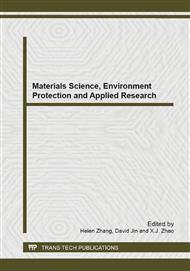p.203
p.207
p.211
p.215
p.220
p.224
p.228
p.235
p.239
Research on Biological Materials with Oxazinone Derivatives Induce Apoptosis in HT-29 Cells
Abstract:
Objective: To monitor the induction of apoptosis in HT-29 cells by three compounds of oxazinone derivatives (A-C) with similar structures and research the mechanism of those oxazinone derivatives in induction of apoptosis in HT-29 cells. Methods: HT-29 cells were used for the determination of cytotoxicity elicited by oxazinone compounds. Cytotoxic effects of these compounds in HT-29 cells are monitored by a Real-Time Cell Analyser system. Results: All the oxazinone derivatives exhibited growth inhibition in HT-29 cells in a concentration-dependent manner. Conclusion: All the three compounds of oxazinone derivatives (A-C) could exhibit growth inhibition in HT-29 cells in a dose-dependent manner.
Info:
Periodical:
Pages:
220-223
Citation:
Online since:
March 2014
Authors:
Price:
Сopyright:
© 2014 Trans Tech Publications Ltd. All Rights Reserved
Share:
Citation:


